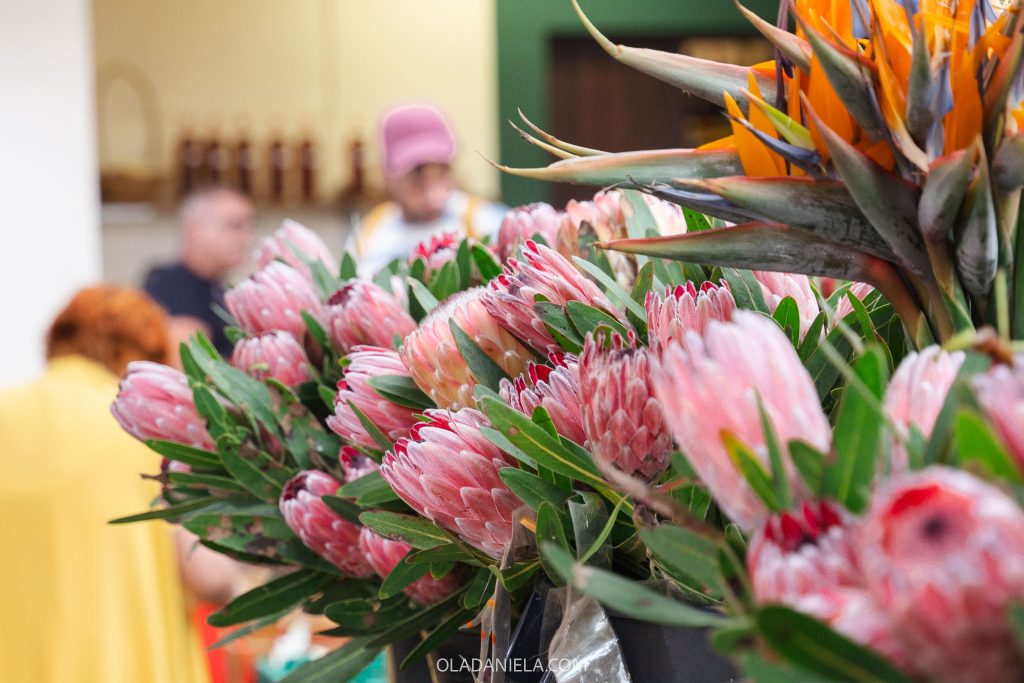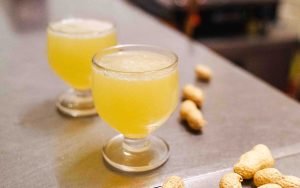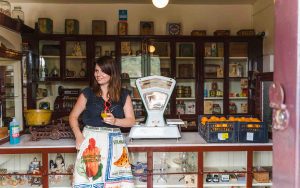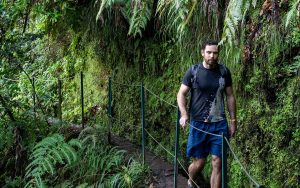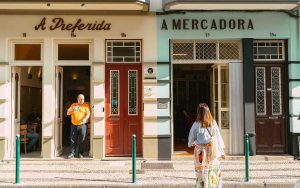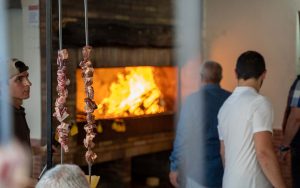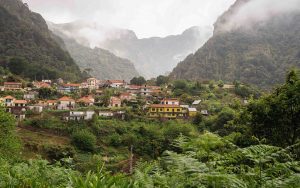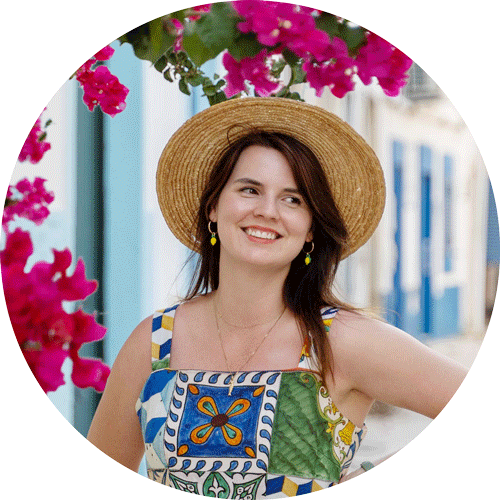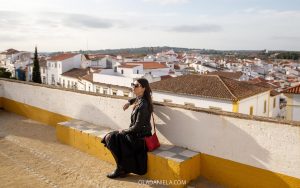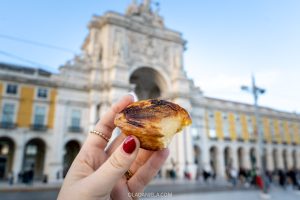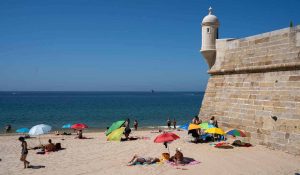This Sunday farmers market might be the best thing I’ve done on Madeira Island. Okay, the landscapes are incredible and the hikes of Madeira are truly breathtaking, but if you’re a regular reader then you know I love food and local experiences – and this one ticks both boxes to the extreme.
The Sunday Mercado Agrícola do Santo da Serra is as real as they come. Here you’ll find a mix of locals selling produce grown on the island (nothing imported), street food stalls with local cider, wine and grills, and homemade goodies like bolo de mel cake and artisanal woodwork and basketry.
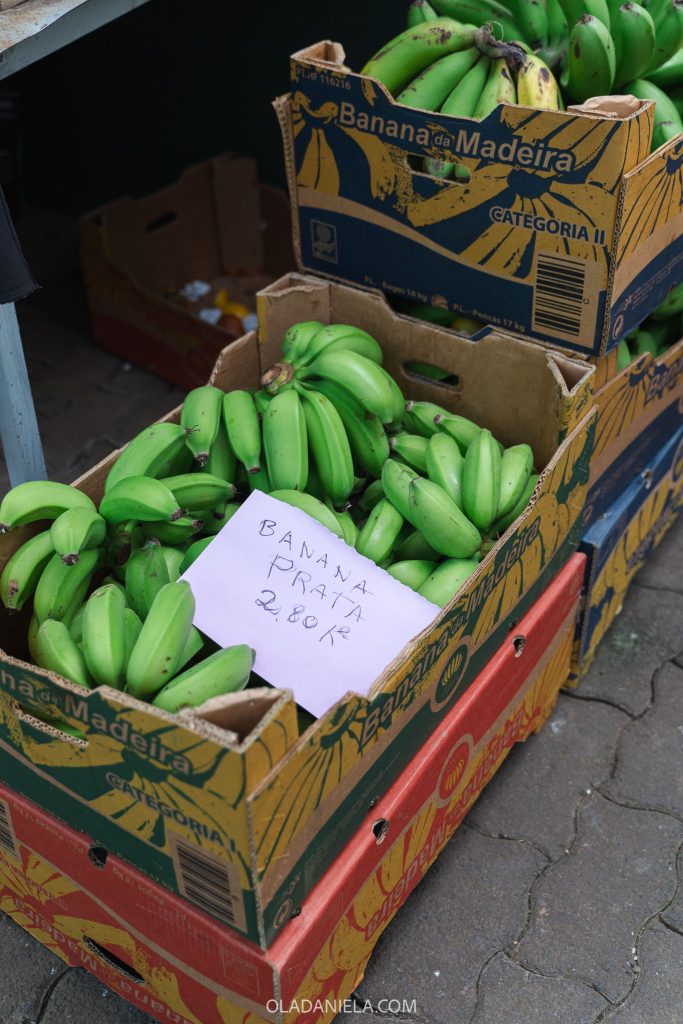
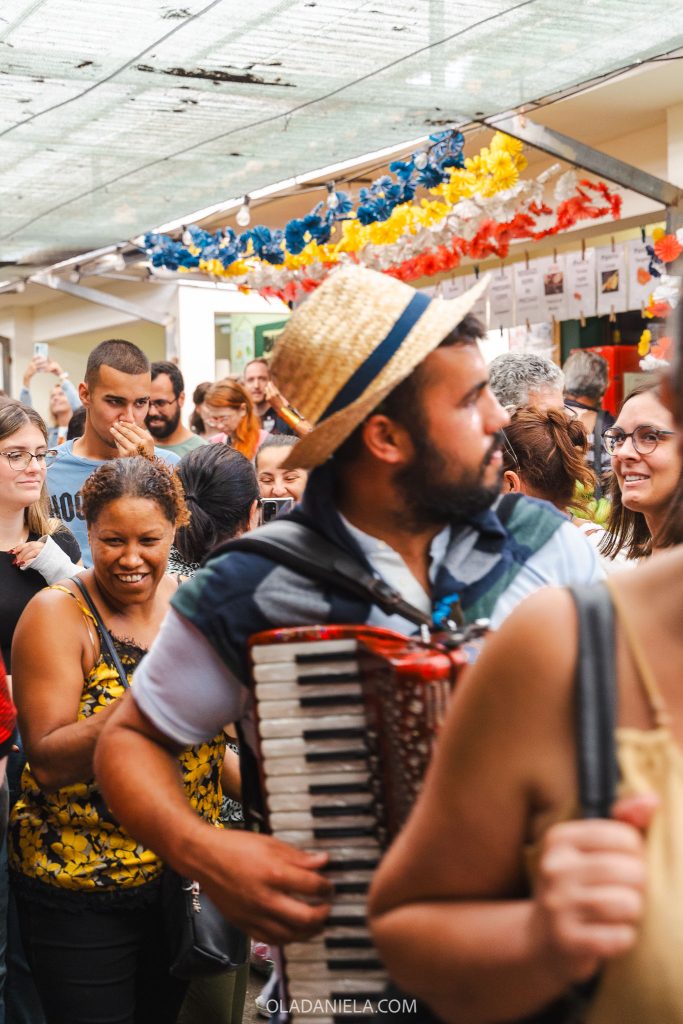
It’s a place to start your morning with a poncha, shop for groceries or fruit, dance with the informal parade of accordion folk songs, and then get your elbows on the bar of a local barraca, squeezing between locals to make your early lunch order.
Here’s where to eat and what to order at the Santo da Serra Sunday farmer’s market, plus tips on shopping, how to get there and when it’s on.
Read next… 29 traditional Madeira dishes and food to try: What to eat and drink
Contents
ToggleEverything we ate and drank at the Santo da Serra market
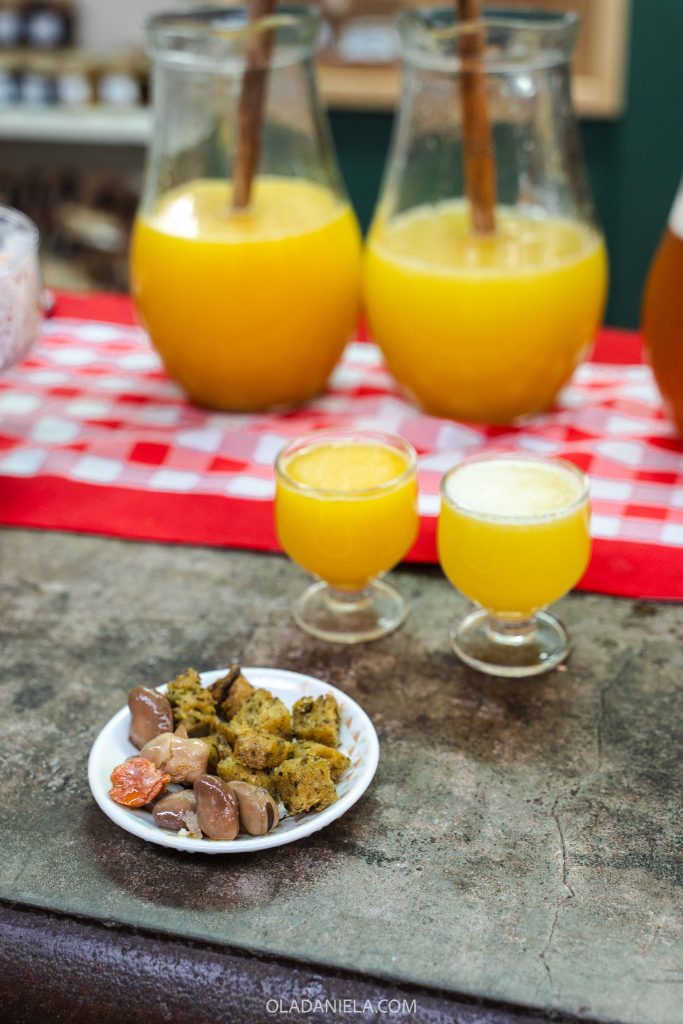
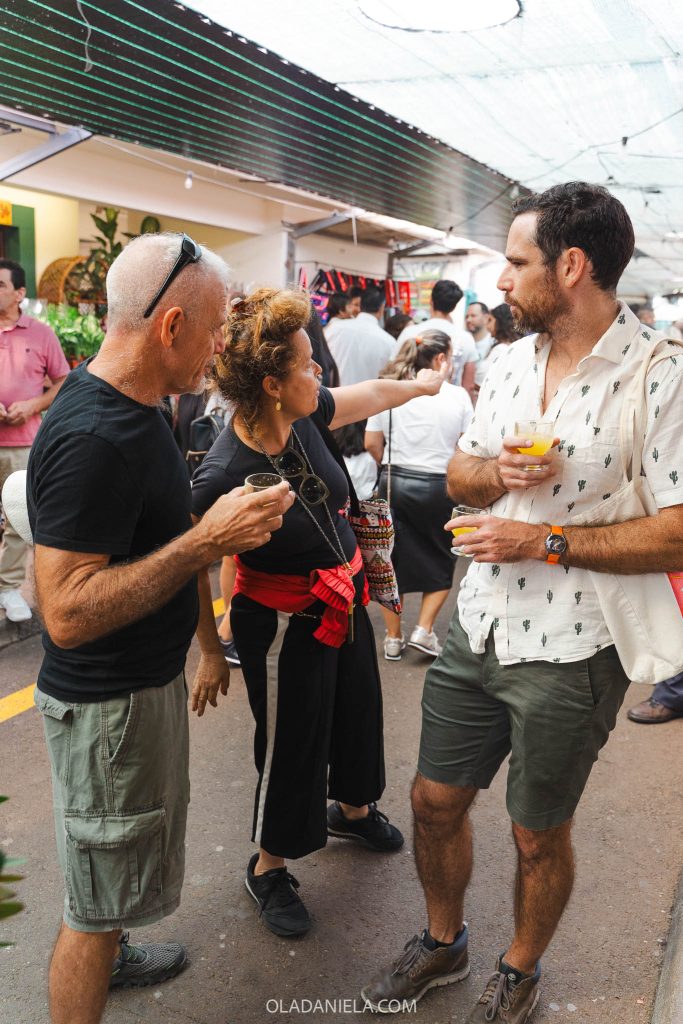
Arriving in the late morning, we made a B-line for Barraca d’Avó, which I’d heard from Hit The Road Madeira serves a great poncha, but more importantly, serves a dentinho (free little snack) with the best milho frito. They were not wrong. Milho frito is a traditional Madeiran side dish that’s essentially fried polenta cubes with herbs.
Local produce that is actually grown on Madeira
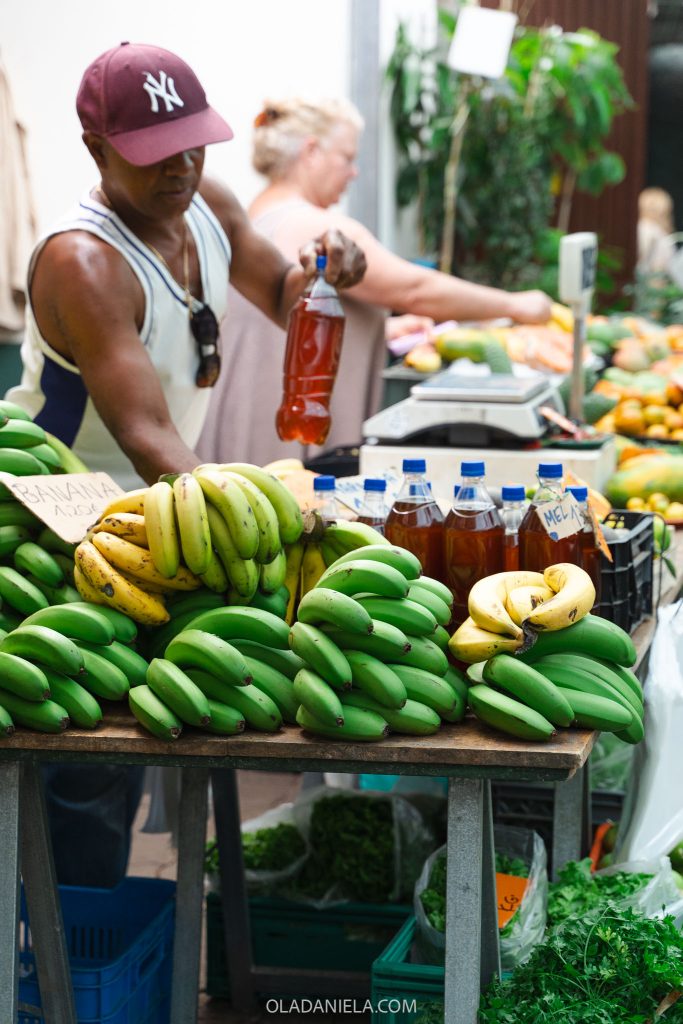
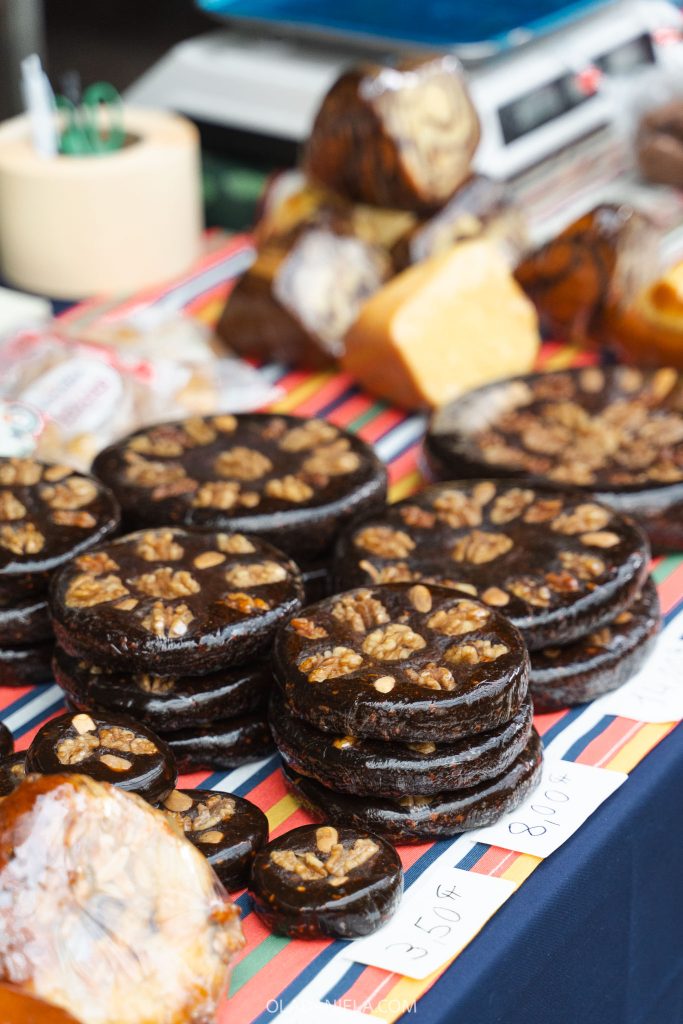
With a poncha in hand, we wandered a little bit, taking in the rush of people and various stalls. Unlike the mercado in the heart of Funchal (which I find to be a bit overproduced and with a selection of imported tropical fruits giving a false impression of island produce), here you’ll find only what is grown in the soil of Madeira.
On an October day that meant tonnes and tonnes of bananas, white sweet potato, quince, spicy peppers, strawberry guavas, pumpkins, lemons, mandarines, kiwis, papaya, fresh herbs, chayotes, monsterra fruits, and loads of tropical flowers.
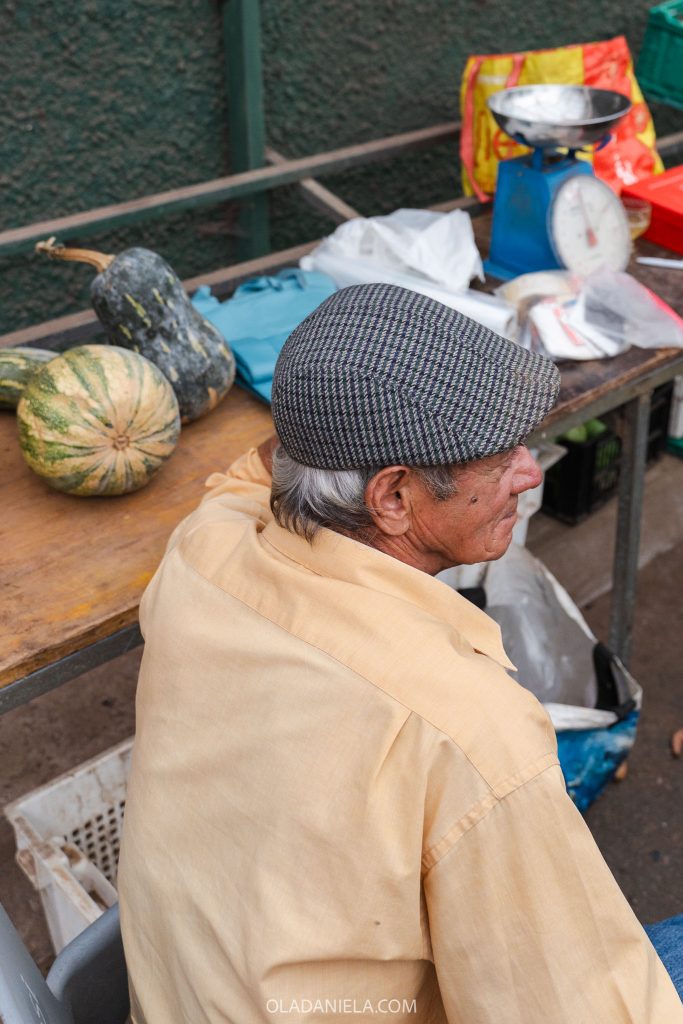

Read next… 8 best poncha bars on Madeira Island
Eat harder-to-find traditional Madeiran dishes
Once we’d rounded the rustic covered market, I wanted to try some of the local traditional Madeiran dishes. I live in Lisbon, so when I visit different regions of Portugal I like to go deep and discover regional dishes. I knew that at the Sunday market the food would be more homely so I’d get to try things that can be harder to find in restaurants – like macarrão à Madeirense and sopa de trigo.

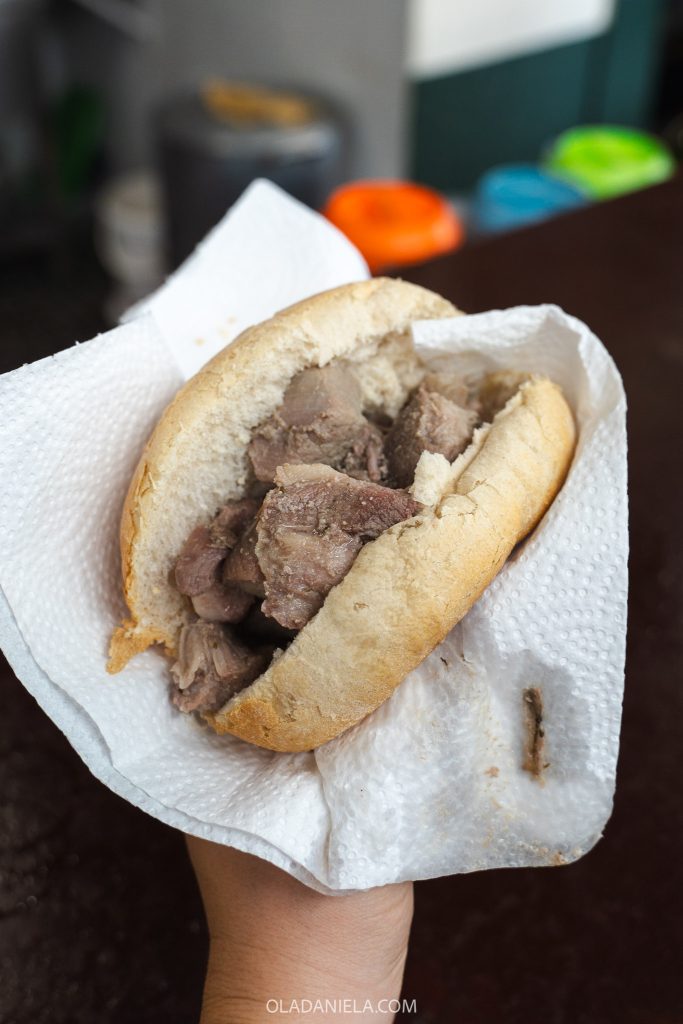
The first stall, A.D.C. Santo da Serra, had both. I asked for a dentinho of macarrão, a rich pasta with meat, and a sweet local cider. My partner tried the sopa de trigo, a hearty wheat stew. The macaroni was great, but the soup was phenomenal. Just one of those hearty stew-like soups with chunks of potato, root vegetables, cooked grains of wheat and unidentified meats. Delish.
Then we shared a fluffy bread bun stuffed with steaming carne de vinha d’alhos, which is pork marinated with wine, herbs and garlic.
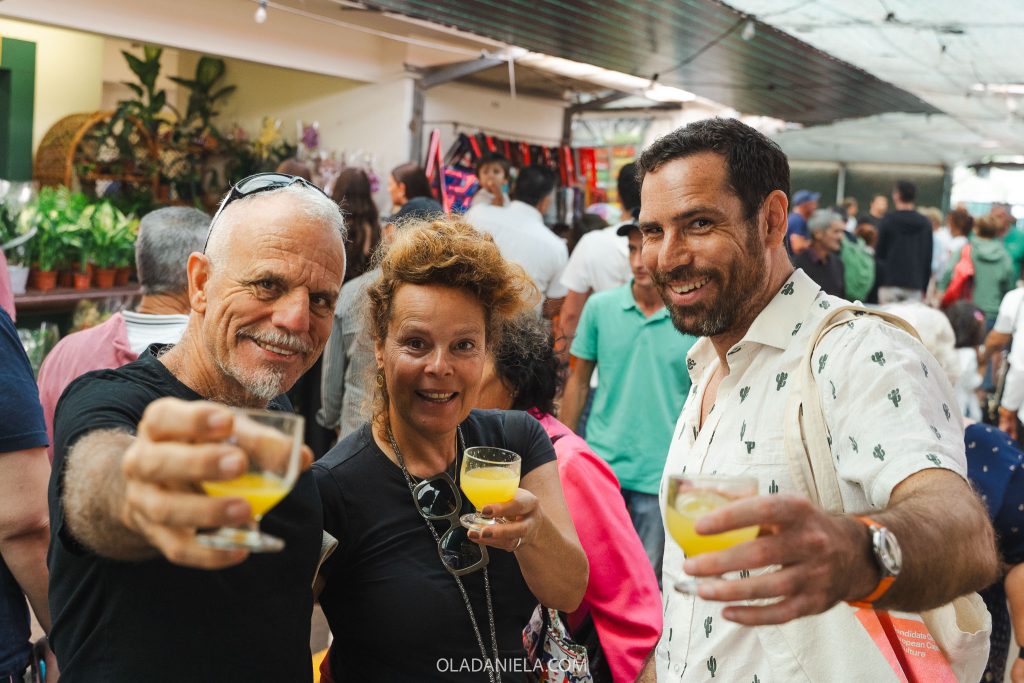
Taste vinho seco for the first (and last) time
I remembered one last traditional Madeiran drink that I’d heard about but it was hard to find – vinho seco. I thought I’d seen an older gentleman drinking something that looked wine like, so I popped by another stall – Barraca da Conceição – and asked for another dentinho of macarrão (I think it was even better here). This stall offered something different to its neighbours, with a big charcoal grill cooking pork ribs and big sausages, and fresh bolo de caco (a local bread) – made in front of you – hitting the slate.
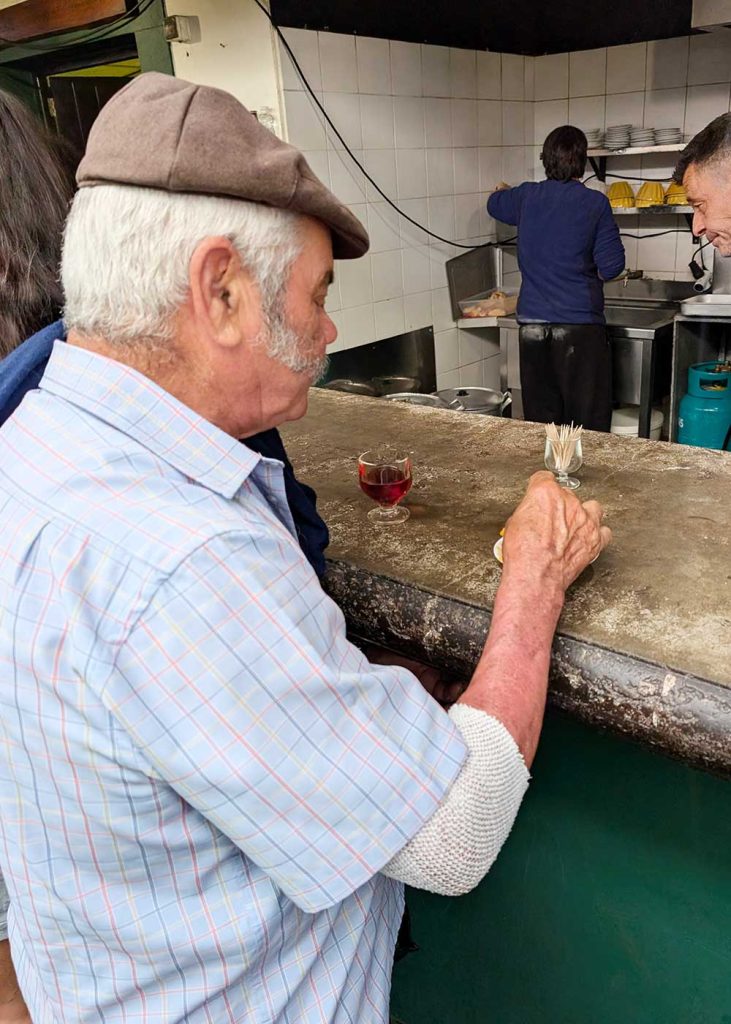
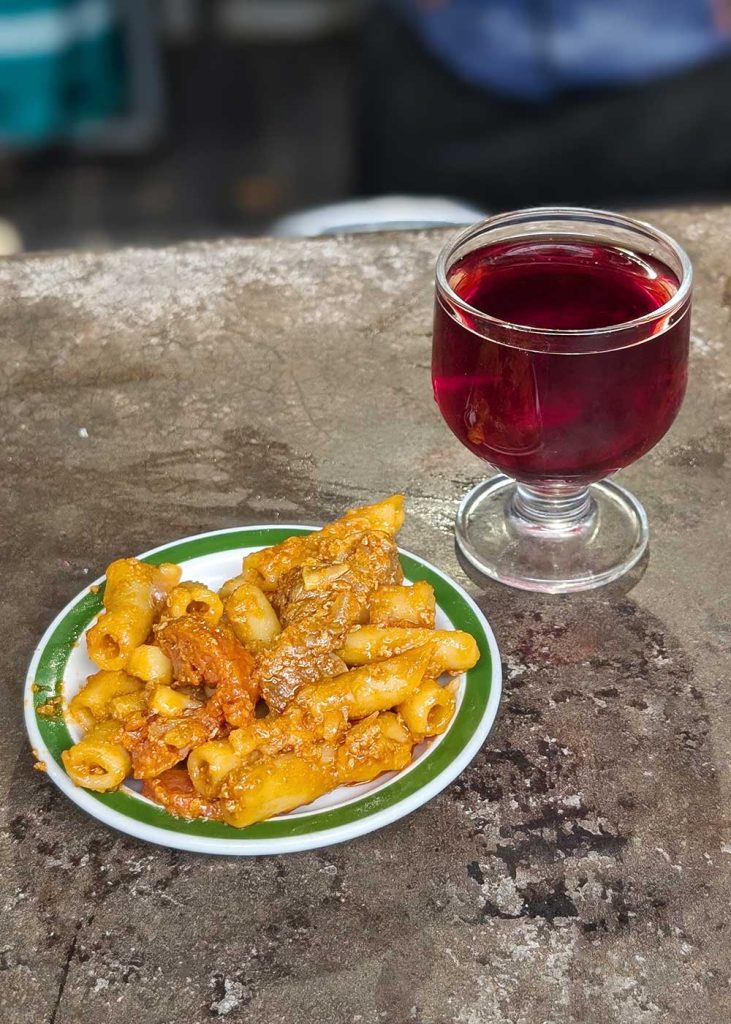
As for the vinho seco? Maybe the worst thing I’ve ever tried. We ended up pouring half down the drain and coyly returned half to the stall. I later mentioned it to a friend and fellow travel writer Joana Taborda, who lives on Madeira, and she said: “Have you read the Wikipedia page?”
Wiki: “This wine is generally considered to be of poor quality by winemakers and has adverse health effects.,,,”
Me: Okay, it’s cheap wine sure…
Wiki: “Dry wine has a short aftertaste, high levels of acidity with highly toxic alcohols, a pronounced fruity aroma, an intense violet-purple color…”
Me: Highly toxic alcohol? Um…
Wiki: “…dry wine is banned by the European Union due to the harmful effects on health caused by its consumption…”
Me: Sorry, what?
Wiki: “…dry wine has methanol concentrations around 100 times higher than those permitted by EU law. These concentrations of methanol cause serious eye damage.”
Right, so that will be my first and last sip of vinho seco.
What I would eat next time I visit the Sunday market

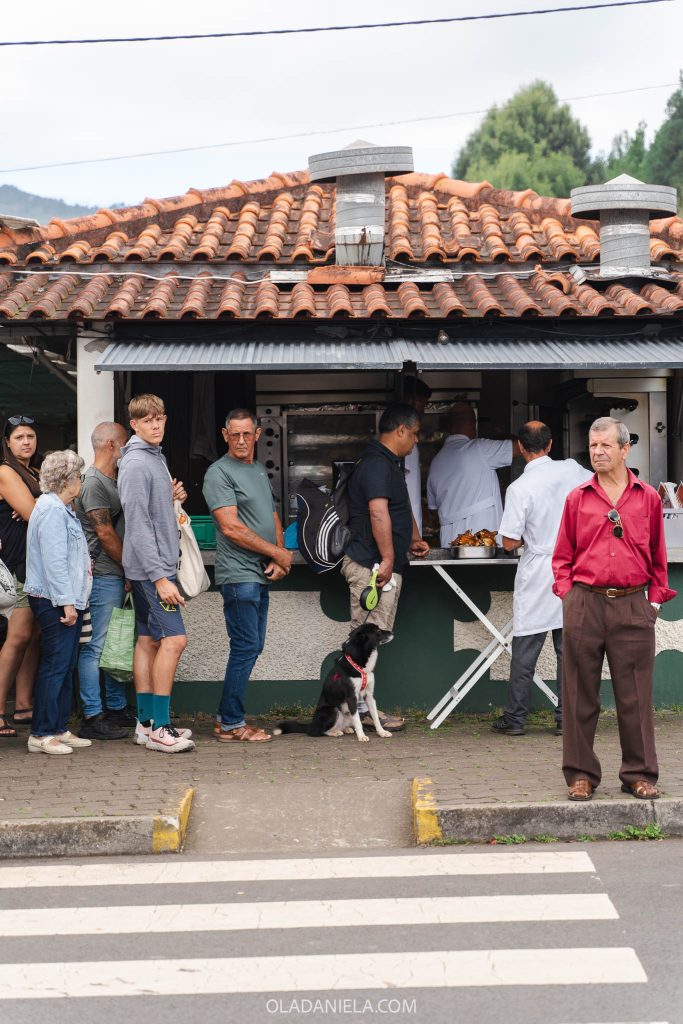
If I had more stomach space I would have tried the roast chicken. There was a stall at the front with a non-stop queue selling whole rotisserie chickens for €7 a pop. People were buying them quick smart, maybe to take for a Sunday picnic lunch. Apparently the nearby Quinta do Santo da Serra is a beautiful public park to explore with great views. It would be a nice spot to sit with chicken, bolo de caco and goodies from the market.
There’s also a stall at the back, near the bathroom, that was serving huge portions of the macarrão pasta and once it was ready had a massive, local queue. Plus there was a butcher selling espetada skewers for you grill yourself in the corner over charcoal.
Read next… It’s worth a flight to Madeira just to eat these espetadas
Other things to do at the Santo da Serra market
At one point, a young man with an accordion walked through the covered market, followed by a troupe with a couple of simple percussion instruments. Together they were belting out Madeiran folk songs, collecting spectators as they went around in a sort of makeshift parade.
At some point they stopped and locals started dancing, some joined in the singing. It was really beautiful to see. I’ve seen plenty of Madeiran folk dancing and songs during the May Festival of Flowers, but they were always professional groups with costumes etc. That was amazing, but it nice to see this more organic expression of local culture.
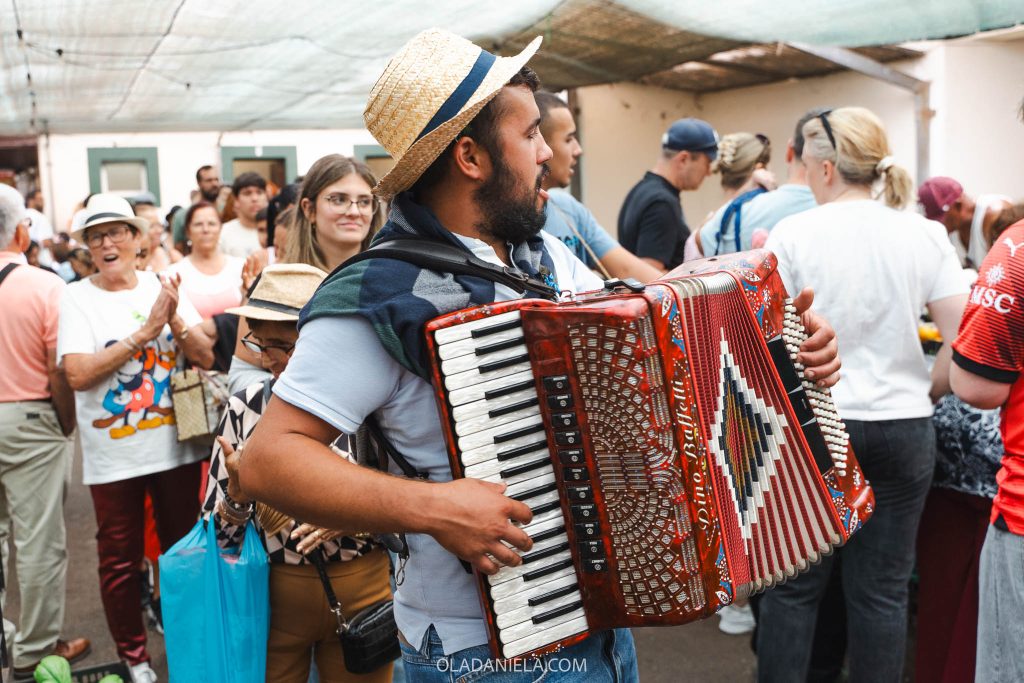
While I spent most of my time in the main food hall, across the road there is a second part of the market that seems to be filled mostly with uninteresting shops – stalls selling clothing made in China or souvenir textiles etc. Right near the front I did find another secret chicken grill and next to that someone was selling handmade baskets, which are traditional to the town of Camucha on the island.
Everything you need to know about the Santo da Serra market
When is the market
Every Sunday! It sounds like it starts around 9am and goes into the mid to late afternoon. I did notice people started to eat lunch or at least snack early, so I recommend coming by 11am to explore the market and start scouting what you want to eat to beat the crowds and avoid missing out.
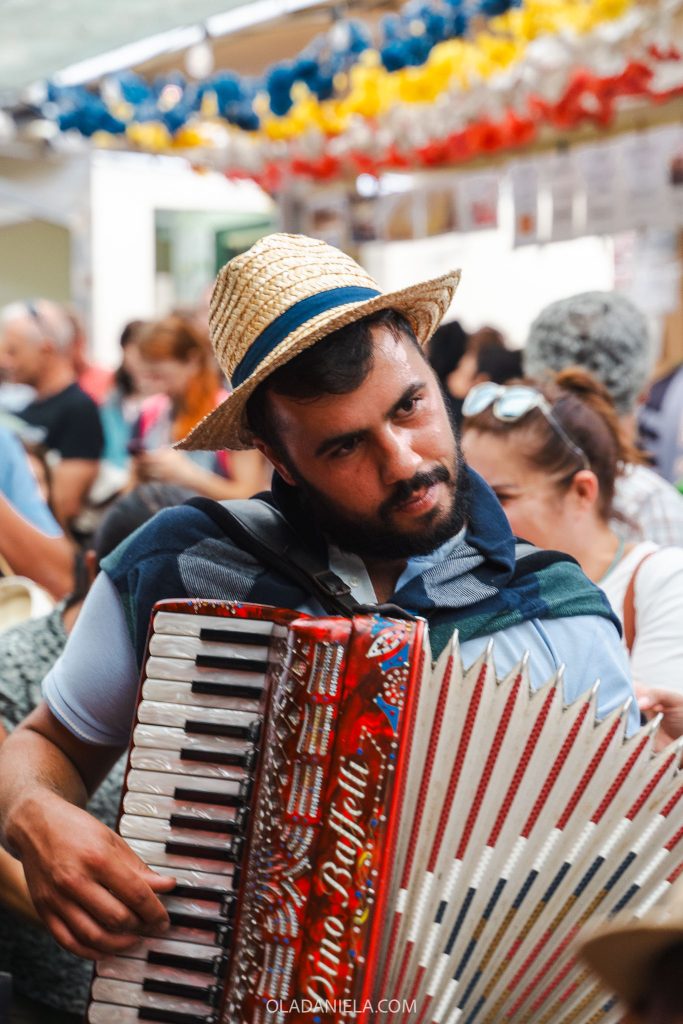
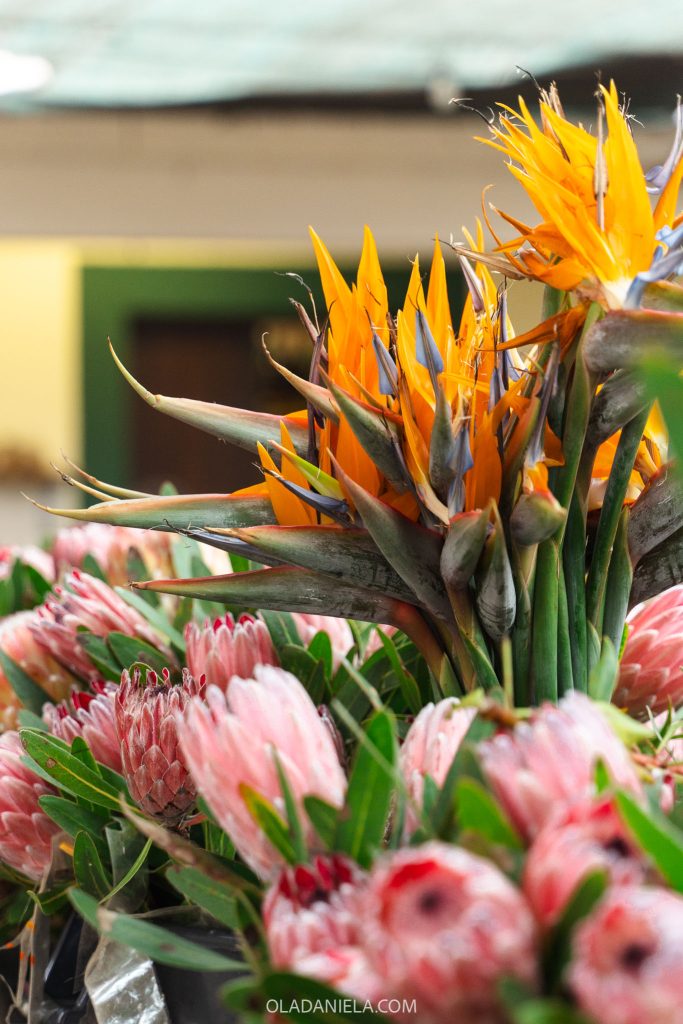
Where is the Santo da Serra market
It’s in a village called Santo António da Serra on Madeira Island. It’s tucked away in the hills in the south-east of Madeira Island. You’ll find the market has a permanent home in the heart of the village.
After, you can visit the nearby gardens of Quinta do Santo da Serra and then go for a round of golf at Clube de Golf Santo da Serra, a spectacular 27-hole course.
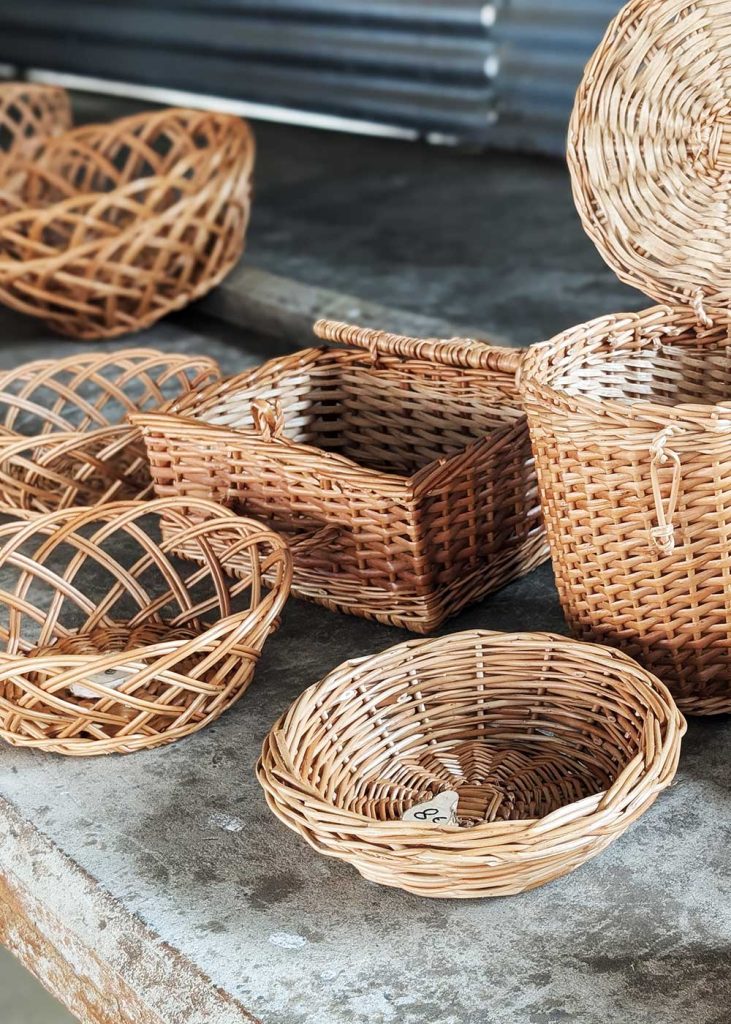
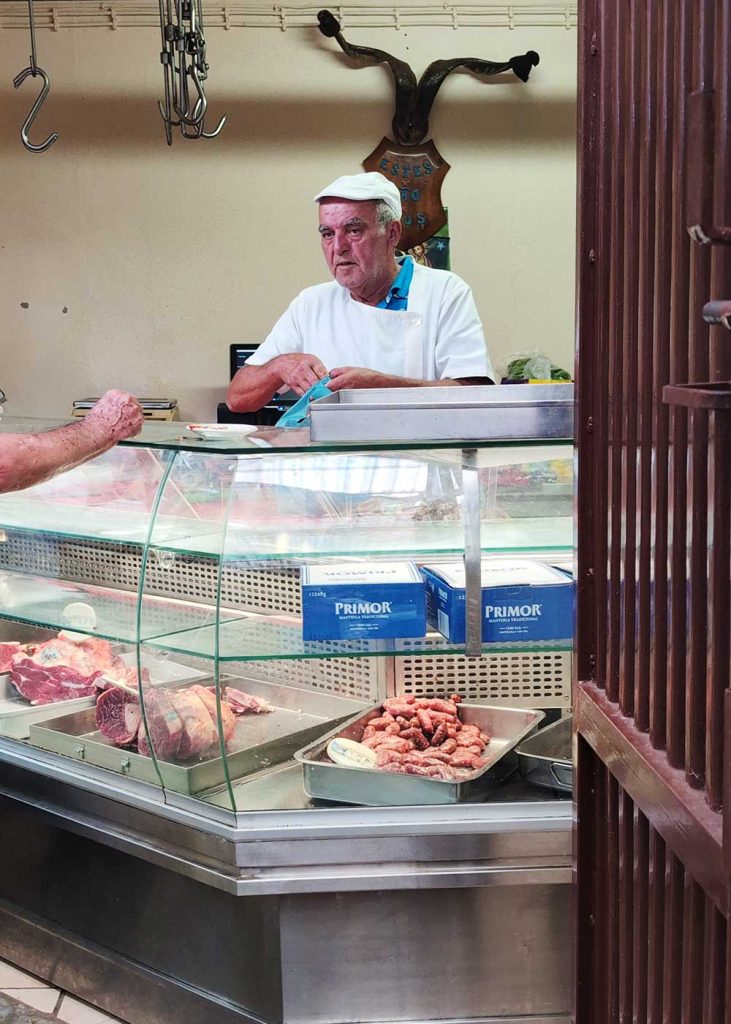
How to get to the Mercado de Santo da Serra
It takes around 30 minutes to drive form Funchal, the island capital, to Santo da Serra. You can also take bus 77, which leaves Funchal at 8.30am and 10.30am on Sundays (please confirm this with recent timetables).
You can also join a guided tour to visit the market. My pick is this top-rated guided day trip that includes a handful of other stops turning it into a fun day out.
That’s my experience from the Mercado Santo da Serra. Have you been? What did you think?
Keep reading about Madeira Island…
- Ultimate guide to exploring Madeira Island
- The 4 best hikes (that I’ve done) on Madeira Island
- 8 best poncha bars on Madeira Island
- It’s worth a flight to Madeira just to eat these espetadas
- 29 traditional Madeira dishes and food to try
- Itinerary: Our magical 5-day Madeira Island road trip
- Where to eat and drink in Madeira
- My 10 favourite Portugal trips in 2024
- Fall in Portugal: 8 places to visit this autumn

